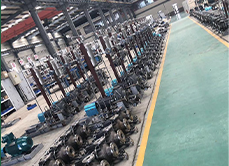Myanmar
- Afrikaans
- Albanian
- Amharic
- Arabic
- Armenian
- Azerbaijani
- Basque
- Belarusian
- Bengali
- Bosnian
- Bulgarian
- Catalan
- Cebuano
- Corsican
- Croatian
- Czech
- Danish
- Dutch
- English
- Esperanto
- Estonian
- Finnish
- French
- Frisian
- Galician
- Georgian
- German
- Greek
- Gujarati
- Haitian Creole
- hausa
- hawaiian
- Hebrew
- Hindi
- Miao
- Hungarian
- Icelandic
- igbo
- Indonesian
- irish
- Italian
- Japanese
- Javanese
- Kannada
- kazakh
- Khmer
- Rwandese
- Korean
- Kurdish
- Kyrgyz
- Lao
- Latin
- Latvian
- Lithuanian
- Luxembourgish
- Macedonian
- Malgashi
- Malay
- Malayalam
- Maltese
- Maori
- Marathi
- Mongolian
- Myanmar
- Nepali
- Norwegian
- Norwegian
- Occitan
- Pashto
- Persian
- Polish
- Portuguese
- Punjabi
- Romanian
- Russian
- Samoan
- Scottish Gaelic
- Serbian
- Sesotho
- Shona
- Sindhi
- Sinhala
- Slovak
- Slovenian
- Somali
- Spanish
- Sundanese
- Swahili
- Swedish
- Tagalog
- Tajik
- Tamil
- Tatar
- Telugu
- Thai
- Turkish
- Turkmen
- Ukrainian
- Urdu
- Uighur
- Uzbek
- Vietnamese
- Welsh
- Bantu
- Yiddish
- Yoruba
- Zulu
Telephone: +86 13120555503
Email: frank@cypump.com
Nov . 21, 2024 15:12 Back to list
dredge slurry pumps
The Importance and Functionality of Dredge Slurry Pumps
Dredging is an essential process used in various industries, particularly in construction, mining, and environmental management. One of the critical pieces of equipment in this process is the dredge slurry pump. These pumps are designed to efficiently transport mixtures of water and solid materials, making them invaluable in maintaining waterway navigation, maintaining reservoir capacity, and providing essential materials for other industrial applications.
What is a Dredge Slurry Pump?
A dredge slurry pump is a specialized pump used to move slurry—a mixture of water and solids—often containing mud, sand, and other materials. Unlike standard pumps, which may struggle against the viscosity and abrasive nature of such mixtures, dredge slurry pumps are engineered with robust materials and a unique design that enables them to handle the challenges posed by heavy, viscous slurries.
Key Features of Dredge Slurry Pumps
1. Construction Materials The harsh nature of dredging operations means that slurry pumps are typically constructed from materials resistant to corrosion and wear. Common materials include high-chrome alloys and rubber linings that can withstand the abrasive action of the solids they transport.
2. Design Dredge slurry pumps often feature a heavy-duty impeller and volute casing designed for optimal performance in moving heavy slurries. The impeller's design is critical, as it creates the necessary hydraulic force to transport the solids through the pump and into the discharge line.
3. Self-Priming Capability Many dredge slurry pumps are self-priming, which means they can remove air from the casing and create a vacuum to begin pumping without needing manual intervention. This feature is particularly useful in the variable conditions often encountered during dredging operations.
4. Variable Speed Options Dredge slurry pumps can often be operated at variable speeds, providing greater flexibility for operators to adjust flow rates according to the specific demands of the dredging task.
Applications of Dredge Slurry Pumps
Dredge slurry pumps play a vital role in various applications
dredge slurry pumps

- Dredging Operations They are extensively used in dredging rivers, lakes, and harbors to remove sediment and debris, which can improve navigation and aquatic habitats.
- Mining In the mining sector, slurry pumps facilitate the transport of mined materials from the extraction site to processing plants, ensuring efficiency and minimizing environmental impact.
- Environmental Remediation Dredge slurry pumps are crucial for environmental protection projects, such as removing polluted sediments from waterways.
- Construction They support construction projects by moving slurry from construction sites, helping to maintain site conditions and manage water levels effectively.
Advantages of Using Dredge Slurry Pumps
The use of dredge slurry pumps provides several advantages
- Efficiency These pumps can handle large volumes of material quickly, reducing downtime and increasing overall productivity in dredging operations.
- Cost-Effectiveness By minimizing wear and tear due to their robust construction, dredge slurry pumps can offer lower long-term operational costs.
- Environmental Considerations With their ability to manage contaminated slurries, these pumps can aid in projects that aim to restore and protect the environment.
Conclusion
In summary, dredge slurry pumps are an indispensable asset in various industries, providing effective solutions for moving slurries containing solids and liquids. Designed for durability and efficiency, they enable smooth operations in dredging, mining, and environmental management. As industries continue to evolve and face new challenges, the role of dredge slurry pumps will remain critical, ensuring that projects can proceed safely and efficiently while meeting regulatory and environmental standards. The ingenuity behind these pumps showcases the blend of engineering and practicality, reflecting their importance in maintaining both infrastructure and the natural ecosystem.
-
ISG Series Vertical Pipeline Pump - Chi Yuan Pumps Co., LTD.|High Efficiency, Low Noise, Durable
NewsAug.02,2025
-
ISG Series Vertical Pipeline Pump - Chi Yuan Pumps | High Efficiency, Low Noise
NewsAug.02,2025
-
ISG Series Vertical Pipeline Pump- Chi Yuan Pumps Co., LTD.|High Efficiency&Compact Design
NewsAug.02,2025
-
Heavy-Duty Mining Sludge Pumps - Wear-Resistant Slurry Handling
NewsAug.02,2025
-
Horizontal Split Case Pump with GPT-4 Turbo | High Efficiency
NewsAug.01,2025
-
ISG Series Pipeline Pump - Chi Yuan Pumps | High Efficiency, Durable Design
NewsAug.01,2025










